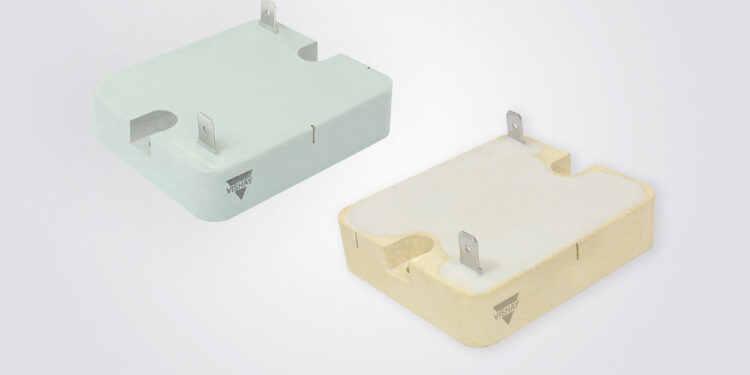New Vishay Intertechnology automotive AEC-Q200 qualified hybrid wirewound charging resistor lowers component counts and costs in EV, HEVs, and PHEVs. The device delivers 10x higher energy absorption for pre-charge and discharge applications, than other component technologies in the same size.
Vishay Intertechnology, Inc. introduced a new automotive AEC-Q200 qualified charging resistor that is the industry’s first such device to feature hybrid wirewound technology in a standard package size.
With a high operating temperature range up to +250 °C, the Vishay MCB HRHA will serve as a pre-charge and discharge resistor in inverters and converters for electric (EV), hybrid electric (HEV), and plug-in hybrid vehicles (PHEV). Typically, designers must utilize several thick film resistors to meet the high pulse requirements of these applications. With ten times the energy absorption in the same size (i.e., 6 kJ for 300 ms), the HRHA hybrid wirewound resistors allows them to use a single component and lower overall solution costs.
The device released today offers high power ratings up to 90 W on stainless steel and 54 W on Pamitherm. For high accuracy and stability, the resistor features tolerance down to ± 5 %, TCR down to ± 100 ppm/°C, and a resistance range from 1 W to 1 kW. Easy to mount, the HRHA features a 6.35 mm faston connection. The device can be mounted on a heatsink and is available with an optional integrated fuse.
FEATURES
- Technology: hybrid wirewound
- High energy / volume ratio
- Easy mounting (faston connection 6.35 [0.250″])
APPLICATIONS
- Precharge
- Discharge
- Active discharge resistor
Samples and production quantities of the HRHA series are available now, with lead times of eight to 12 weeks.































